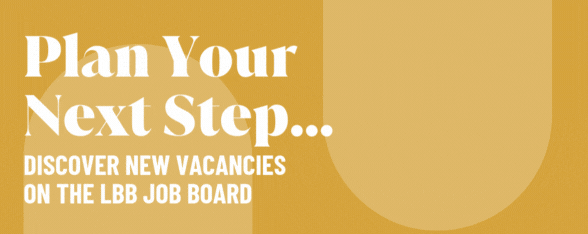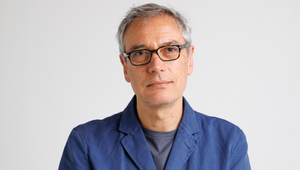
Planning for the Best: Jody Elston on Helping a Brand Stay True When Change is Irresistible

Jody Elston is a master at helping challenger brands to win. Her 24-year track record has seen her win multiple awards, including 2022 Challenger Brands Effie for Great Southern Bank and a 2022 Effie for Mitsubishi Triton.
In her previous experience, she was responsible for setting up AJF Partnership’s strategy discipline in Melbourne and Sydney, which rose to become one of Australia’s largest independent agencies.
Jody joined 303 MullenLowe Sydney in December last year and spearheads the agency’s overall strategic capability, leading a suite of senior planners across the agency including those within its brand, CX, UX, social and channel planning disciplines.
LBB> What do you think is the difference between a strategist and a planner? Is there one? And which description do you think suits the way you work best?
Jody> Strategy is certainly about what we deliver. Planning is just the historical name for the strategy discipline born out of the original ‘Account Planning’ function founded in London by Stephen King and Stanley Pollitt. While the discipline has certainly evolved, what has stayed true is the principle of putting effectiveness at the heart of an agency. There has been some confusion over the years as to what ‘planning’ does, so I think while there is obvious romantic attachment to the term and a feeling of standing on the shoulders of planning giants, the ‘strategy’ title serves us better. At the very least, it explains what we do.
LBB> We’re used to hearing about the best creative advertising campaigns, but what’s your favourite historic campaign from a strategic perspective? One that you feel demonstrates great strategy?
Jody> It would have to be Audi as the ultimate case of an effective ‘long idea’ inspired by a single-minded strategic thought. Vorsprung durch Technik (advancement through technology) was an old internal line used on the factory floor that was made famous by BBH over 40 years ago, taking the brand from a middle market player to the most desirable premium brand.
It is so much more than an advertising end-line – it is a powerful strategic positioning idea that ended up driving everything, from famous creative to innovations like a moon buggy, forever elevating Audi in people’s minds as the progressive premium brand, and framing rivals Mercedes as traditional and stuffy and BMW as brash and overly obsessed with status.
This positioning has kept Audi laser focused, with so many wonderful campaigns over the years from BBH’s ‘Number One’ spot in the early 90s to the more recent ‘Clowns’. But my favourite is still Audi’s 2008 ‘Godfather’ super bowl spot where Audi is positioned as a new power rising against the establishment from Venables Bell & Partners in the US.
Locally 303 MullenLowe created ‘Machine’ by Audi, a feature-length documentary on the extraordinary impact of AI. It’s a great example of an enduring strategic idea that is made fresh, through different eras, goals, creative minds, countries, mediums and products.
LBB> When you’re turning a business brief into something that can inform an inspiring creative campaign, what do you find the most useful resource to draw on?
Jody> Making space for curiosity and lateral thinking. The challenge we have as strategists is we are still creative thinkers – we take all that research we do and put it together in a new way. But the usual mode of work is often ‘busy, busy’ – you know when you feel like you’re being super-efficient and ticking off the to-do list. But this is the worst mode for strategic thinking because you’re closed.
You need to deliberately lock yourself away from all distractions, having done all the digging, to make new connections.
I remember listening to John Cleese talk about the ideal mode of creativity – I still use his principles and try to give myself 1.5hr pockets of thinking time to be playful for any problem I’m trying to solve, to tolerate the discomfort that you haven’t yet solved it. And then hope my unconscious rewards me in between when walking the dog, in the shower, or while driving, etc, with those ‘aha’ moments!
LBB> What part of your job/the strategic process do you enjoy the most?
Jody> I do love framing the problem to solve. I think this is still often rushed over, and people don’t always appreciate the power in doing it well. You might have a genius strategic idea, but if it’s solving the wrong problem, then it’s just not going to be effective.
The problem to solve as we know is not the goal or objective – it’s getting underneath and really understanding the nub of the issue. For example, when I was working on the Helga’s bread brand, there was clear dissonance between the fantasy the brand was telling as a little European bakery that lovingly bakes every loaf by hand and the reality as a mass-produced conveniently packaged bread. The challenge became to show Helga’s cares in a much more genuine way.
LBB> What strategic maxims, frameworks or principles do you find yourself going back to over and over again? Why are they so useful?
Jody> Mark Ritson often talks about being seduced by the ‘pornography of change’, and I do think there is an inherent bias as a strategist to want to ‘start again’ and change things. But the evidence tells us that crafting a long-term brand narrative and then refreshing it in highly emotive ways is the secret to long term effectiveness. So I always begin with the backbone of the brand – what is that truth or reason for being that will never change?
Using metaphor elicitation to reveal the target audience’s unconscious feelings and biases is a great tool to understand how people feel now. Usually there is a strategic shift that’s required – so while it’s important to stay true, we then need to understand how to adapt the DNA to culture or changing consumer needs for improved relevance, or to address a barrier that’s holding back growth without a complete departure. It’s often where the springboard for the next chapter in a brand’s narrative comes from.
LBB> What sort of creatives do you like to work with? As a strategist, what do you want them to do with the information you give them?
Jody> I’ve had the good fortune of working with some wonderful creatives along the way who are themselves very strategic. It’s great when you can do your digging and then prepare the problem and a few starting thoughts to solve it and then just have a chat. Which feels stimulating? Which feels true? Is there another area we haven’t thought of? Then, through the creative development, more talking and bouncing around of ideas. I want the brief to be clear and inspiring, so they can spend their time working out the most emotive way to express it.
LBB> There’s a negative stereotype about strategy being used to validate creative ideas, rather than as a resource to inform them and make sure they’re effective. How do you make sure the agency gets this the right way round?
Jody> By setting a philosophy and practice that puts effectiveness at the heart. To work with clients and people that believe in the power of strategy. To spend more of your research time up front working out the strategy, not validating the creative. Testing work is a tricky business as a polarising response is often a good sign of creative effectiveness versus a mild universal liking but this takes education.
I do still think it’s worthwhile for the strategist to help explain why a creative idea will be effective, but it should be by connecting back to the original strategy and their knowledge of how advertising works. There are now better methodologies out there that test for emotional intensity, so it’s also a good idea to get these in front of clients if they aren’t already.
LBB> What have you found to be the most important consideration in recruiting and nurturing strategic talent?
Jody> Hire for people’s ability to think differently or laterally – the rest can be taught.
LBB> In recent years it seems like effectiveness awards have grown in prestige and agencies have paid more attention to them. How do you think this has impacted how strategists work and the way they are perceived?
Jody> The Effies force a conversation about effectiveness – what business, behavioural and brand objectives do we want to shift, by when, and how are we measuring them. They give us a reason to deep dive into the client’s data, and we always learn something and better understand a client’s business. We’re also more likely to start the next campaign with the discipline of an effectiveness scorecard.
Winning an Effie is everyone’s award who has worked on the campaign, and I think it’s well understood now that the highly creative work is the most effective.
LBB> Do you have any frustrations with planning/strategy as a discipline?
Jody>It’s underutilisation beyond advertising. There are so many brilliant strategists whose thinking could be used in more expansive ways to influence the success of a business. Whether it’s hunting for growth opportunities, product/service development, innovation or even pricing. The strategist is in a great position to partner with the marketing team to help ensure what they do lives up to what they say.
LBB> What advice would you give to anyone considering a career as a strategist/planner?
Jody> You must truly love the discovery work of strategy – doing interviews with people, going on shopper visits, pouring through data, digging through case studies. It’s not glamorous – you must have that real curiosity to keep digging until you find something interesting.
It’s a highly rewarding career as you get to balance that more analytical side with thinking creatively – you touch all sorts of categories and go deep in subjects you never thought you’d be an expert in.















